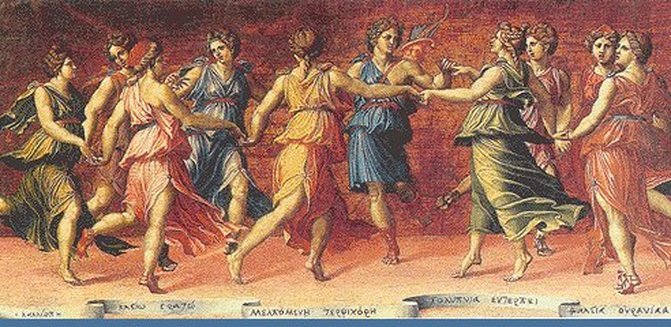The Muses in Greek Mythology are goddesses of expression, science, and writing. It is told Zeus and Mnemosyne made love nine days in a row, conceiving each of the nine.
They were known to be extremely youthful and furthermore appealing. They are presented as having a fairly close relationship because the nine are always shown together.
Each of the nine of the Muses is the daughter of the Greek god Zeus. Every one of the nine has an exclusive job in Greek myths.
The nine youthful goddesses were accepted to live on Mount Olympus accountable for engaging the divine beings with every one of their given gifts.
Mnemosyne was the goddess of memory as well as the daughter of Uranus and Gaea; however, she is the Mother of the nine Muses.
List of Greek Muses

- Thalia: She is the Comedic muse and is known to hold a comic mask, a shepherd's crook, and a wreath of ivy. Her name translated means “Flourish,” “Blooming,” and “Rich in festivity.”
She was the eighth born of the nine muses. She’s described as having a joyous aura. - Melpomene: She was known to be the muse of the Chorus but later became the muse of Tragedy. Her name is from a word in the Greek language and means “ to celebrate with dance and song.”
Earlier in her years, she was known as the muse of worship and singing but later became known for the complete opposite. She is often shown with the Greek god Dionysus in most artworks. - Euterpe: Muse and or goddess of music. Euterpe was called the “Giver of Delight” by many poets of that time. She was an inspiration to many poets, and many prayed to her for inspiration.
She was believed to have invented the double flute and other wind instruments because she was often depicted as carrying such instruments. - Cleo: Cleo, or (Clio), was the muse of history. Her name had many translations, such as “make famous,” “To celebrate, or “To recount.”
After judging the Greek goddess Aphrodite for her love of Adonis, she was punished. As punishment, she was mad to fall in love with mortal Pierus. - Terpsichore: Goddess of dance and chorus. Being the muse of the chorus, it makes sense she is the mother of the sirens. She is usually presented holding a lyre (a musical instrument of that time).
- Calliope: Translated to “ beautiful-voiced”. She is the muse of eloquence and epic poetry. She is said to be the most assertive and the wisest of the nine.
She wears a golden crown and is usually depicted carrying a scroll. - Erato: Her name translates to “lovely” or “beloved.” She is the muse of lyrical poetry, especially love and erotic poetry. She is shown holding wreaths or roses. Sometimes even depicted with turtle doves around her
- Urania: Translated, her name means “heavenly.” She is the goddess of astronomy and is said to be able to read the future from the stars. She is said to inherit her mother’s grace and beauty.
- Polyhymnia: “One of many hymns.” She is the goddess of sacred poetry and is also credited with being the muse of geometry and meditation.
